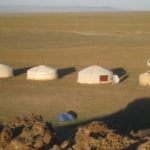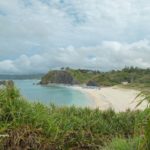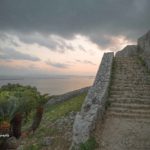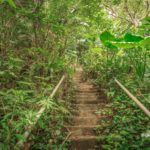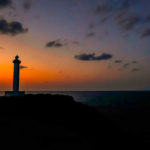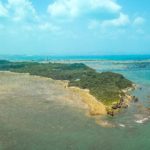Shopping in Sri Lanka: What to buy and how not to get ripped off
Shopping in Sri Lanka can be a very daunting experience, but if you follow these guidelines, you will be just fine.
Shopping for Heirloom’s
According to Insight Guides, many souvenirs on sale at the major resorts are stereotypical in design and generally low in quality. If you shop around for heirloom-quality objects it can be relatively affordable. Note that you will need a license to export any genuine antiques (defined as any object more than 50 years old). Consult the Tourism Board on Galle Road in Colombo on securing the necessary paperwork when shopping for heirlooms.
Buying Handicrafts
The government run emporium Laksala has branches in most of the island’s major towns and makes a handy place to check out the full range of crafts available and get an idea of prices. The sales people here are very knowledgeable about the products and can help you find that perfect gift.
Woodcarvings
Sri Lanka’s masks are traditionally used in performances of ritual dances. These masks are used to frighten off the bad spirits.
The center of Sri Lankan mask-making is on the west coast town of Ambalangoda, which has a number of workshops open to visitors. The Ariyapala and Sons Mask Museum has a big workshop and shop selling reasonable-quality masks. Alternatively, Southland Masks (store and villa), in Galle, has an excellent and wide-ranging selection of quality creations.
Batiks
Batik was first introduced from Indonesia by the Dutch. Now numerous factories and smaller workshops around the island produce mass quantities of batik clothes and pictures. At whichever end of the scale, all are made through the same time-consuming process of carefully applying wax to the areas not to be dyed. After each dying, the fabric must be fixed, the old wax washed out, and then more wax reapplied for the next dyeing. In this way, the pictures gradually develop in color washes as the batik-maker works from light to dark. Originated as a primary art of fabric dying, batik has evolved into a vibrant industry of fabric art.
Batik’s Today
Today the batik textile manufacturing in Sri Lanka is deep rooted into the local culture and many local artists have embraced it as one of our own, developing unique wax resist and dying techniques to create batik designs that are unique to Sri Lankan batik artists.
Gems and Jewelry
Beware of friendly sales people with a handful of glinting “gems” which turn out to be pieces of worthless cut glass. Choose a dealer or a shop belonging to the National Gem and Jewelry Association or the International Colored Gemstone Association. The words “Tourist Board Approved” sometimes displayed in shops have no official backing. Remember, you are the buyer – don’t be pressured into making a snap decision.
For more info on buying gems and jewelry, please see the Gen up on the Gem’s article in the Telegraph Travel and TripAdvisor‘s recommendations under Attractions.
Marine Products
These are usually polished shells and pieces of coral – for sale. Remember that buying such items directly contributes to the destruction of Sri Lanka’s fragile and seriously endangered marine environment. In addition, the export of marine (and all other animal) products is illegal. Even if you bring them into most foreign countries you’ll be looking at a hefty fine and/or jail time f you’re caught.
Malls, Department Stores, and Retail Complexes
For shopping in Colombo, my favorite places are Odel,
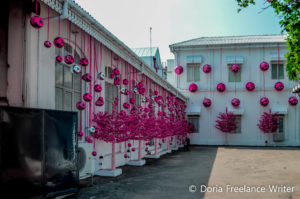
Odel, Sri Lanka’s largest department store during the holiday season
Barefoot, and Paradise Road. All of these places have been around now for at least 25 years. Odel is a department store that carries clothing, accessories, and home decor. Barefoot specializes in hand-woven clothing and home decor. Paradise Road is known for home decor and Sri Lankan and Indian handicrafts.
A shopping mall that has been open since 1991. The complex consists of a diverse range of shops, offices, banks, a supermarket with international food, a fast-food area, an amusement center for the kids and a state-of-the-art cinema complex showing 3-D movies as well as a 2-level car park.
Shoppers will enjoy international brand clothing and up-market fashion boutiques, Sri Lankan handicrafts, cosmetics, gems & jewellery, fashion accessories, sports & fitness goods, household & electronics.
There is also a hair & beauty salon, and graphics & photographic studio
Sri Lanka’s oldest and first shopping mall. It was even open when I arrived in 1988! Last year they expanded to the building next door and it looks very modern. If they don’t have what you are looking for, the very knowledgeable shop keepers will find it for you.
This multi-story shopping complex has a diverse range of products from clothes to electronics, to kids toys, and Sri Lankan handicrafts.
A small mall that offers high-end clothing for men and women. Visitors are often surprised to find Adidas and Reebok stores inside this mall.
The food court here serves food till 10 pm. Crescat might not cover a huge area as compared to other supermarkets like Liberty Plaza or Majestic City, but it is considered a shopping paradise for its abundance in variety of products.
Has a large variety of stores and restaurants including Levi’s, Nike, Samsung, LG, and Charles & Keith.
This building used to be Governor Gregory’s audit building in the 1800’s.
When the Dutch ruled Sri Lanka till 1796, this hospital was in full swing. Since 2011, it has been refurnished and is now a shopping complex filled with restaurants and shops. It is the oldest building in Fort today.
Buying Directly from the Beach
At times you may be approached by sales people who stroll up and down the beach with bags of clothes and tourist trinkets. This might be a good opportunity to pick up a few bargains if you’re prepared to barter hard. Bargaining is also the order of the day in smaller shops, and in all but the smartest boutiques a request for a “small discount” or “special price” can sometimes work if you’re making a big purchase or buying several items.
